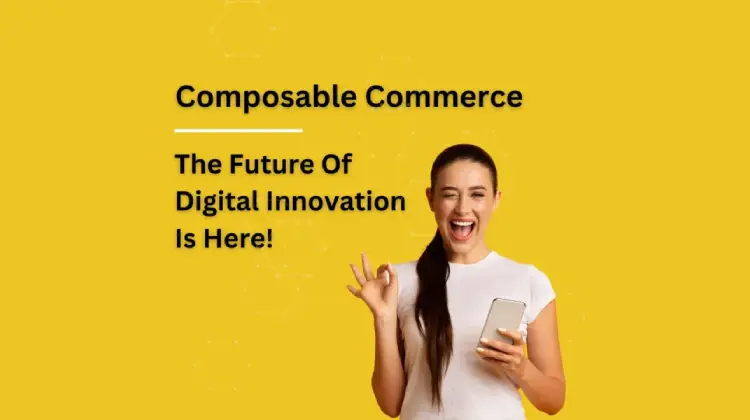How is composable commerce reshaping the landscape of digital innovation?
Composable commerce is a new paradigm that has arisen in the dynamic field of digital commerce. The way entities create and maintain their internet presence is being revolutionized by this method. Integrating and assembling different commerce services and components to create a customized environment that precisely meets client needs is the essence of composing commerce. This all-encompassing support will motivate you to maximize your modular commerce.
What’s all the fuss about Composable Commerce?
Composable Commerce utilizes modular components for seamless integration within the commerce ecosystem, allowing for independent development, updates, or replacement without disrupting the entire system.
E-commerce teams can choose and put together best-of-breed commerce solutions using composable commerce, then customize them to meet their specific business requirements.
Composable commerce uses cutting-edge technologies and strategies like MACH (Microservices, APIs, Cloud, Headless) and JAMstack (JavaScript, APIs, and Markup) in place of a one-size-fits-all e-commerce capability in order to adapt to the constantly shifting market dynamics of the present and the future.
- Microservices are independently developed, deployed, and managed business functionalities.
- API-first, they allow for integration between applications or services.
- SaaS that is cloud-native makes use of cloud capabilities and automatically updates functionality.
- Headless, they decouple the front-end user experience from back-end logic, allowing for design freedom.
In what ways does composable commerce contrast with traditional commerce:
Composable commerce is an e-commerce platform that enables businesses to lay down their infrastructure by combining microservices, or specialized components, in a flexible and adaptable manner. Because of its flexibility and agility, companies can easily add or remove components in response to shifting market dynamics or client demands.
As a result, it enables companies to create customized solutions or mix and match components, Compositable commerce also promotes innovation. Additionally, it places a high priority on interoperability and integration, which facilitate connections with third-party services and APIs. On the other hand, data silos may result from integration issues with traditional commerce.
Why is it crucial to your business to opt for composable commerce?
Composable commerce is a modular system that can be deployed independently, based on open standards and integration patterns. It allows customization of third-party API services, which can be designed by technology vendors, businesses, or their partners.
Modern, flexible technologies like microservices, APIs, cloud, headless, and JAMstack architectures are used for agility, iteration, and innovation.
The key benefits of composable commerce
- Composable commerce utilizes modular components called packaged business capabilities (PBCs) that can be easily connected, exchanged, or removed, providing numerous benefits for e-commerce businesses.
- Composable commerce allows businesses to adjust their e-commerce platform’s size and performance using cloud-based PBCs, enhancing performance and reliability by allowing each PBC to be independently deployed and monitored.
- Composable commerce allows businesses to adapt to changing consumer needs, industry trends, and technological advancements, enhancing performance and reliability. It allows for customization of e-commerce platforms, and simplifies integration with third-party services, enhancing customer journey and satisfaction.
In conclusion, Composable Commerce—which offers a flexible, scalable, and customer-centric approach that is in line with the dynamic nature of the digital marketplace—is geared to redefine the future of e-commerce.
Please Reach out to marketing@tychons.com to fulfil your e-commerce needs.


